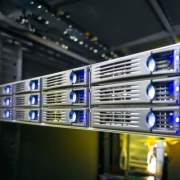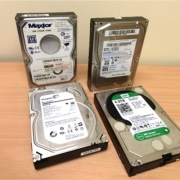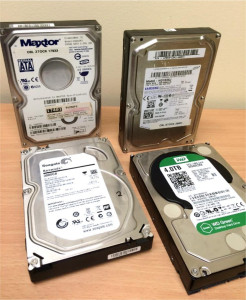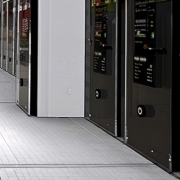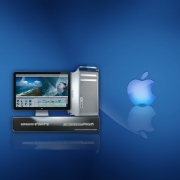How to Recover Data from Your All-Flash Array Drive
An all-flash array is part of a solid state storage disk system that contains multiple flash memory, rather than spinning hard disk drives. All-flash array technology has been around for a while, but its only in recent years that it’s become a truly reliable option on an enterprise level and is able to fully-justify its higher price.
But, as with all types of digital and computer-related storage and disk use, the data recovery side of all-flash array is something of a mystery to all but the fully initiated.

Rack mounted storage server hard drives
Don’t Attempt DIY Data Recovery,
Of course, as data recovery experts it’s not really in our interest to recommend DIY recovery when you lose data or your computer fails. But, as you’ve seen from some of our other posts, we do discuss it and state that it can be done, with a combination of luck and skill.
When it comes to an all-flash array system, we don’t think that good luck will be enough to result in a successful DIY data recovery attempt. That’s because the way in which all-flash arrays work, make it difficult for all but the experts to delve into them.
Any use of a data recovery program must be done on a separate drive to ensure nothing on the all-flash array is over-written. All-flash array is much quicker at transferring data than spinning disks and is becoming a much more hard-wearing option for IT managers and businesses. However, it also requires a more knowledgeable and delicate touch to retrieve lost data from it.
Data Loss or Drive Failure Less Likely
But, while data recovery of all-flash array is more difficult, the system itself is more hard wearing and reliable, therefore making the potential of data loss or failure, less likely. That’s partly thanks to the lower heat produced by the solid, non-spinning disk system. Less power is also required to run all-flash array systems, which is another benefit for the larger companies who use them.
While they might be more expensive to buy initially, they are more cost-effective to run and, use and save more data on. Indeed, the fact they are becoming the first choice for TIER-1, critical data storage tells you a lot about how reliable they are.
Don’t Forget to Back-up That Data
As you can see, we could wax lyrical all day long about how great all-flash array systems are. However, if you want to avoid a scenario where you’re searching for an all-flash array expert to recover some vital data, we have a solution for you – regular back-up method!
We know, you’ve heard it and read it, a thousand times before. But, if your data is important, you need to treat it as such and keep it securely stored in multiple locations. This will protect you from:
- Storage failures.
- Malware and ransomware.
- Criminal attacks.
- Power failures.
Once you select the right back-up systems and begin the regular job of performing those back-ups, you’ll be in the position where data loss isn’t a problem and you won’t need the services of your local, expert data recovery specialists.

